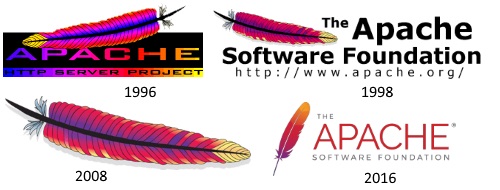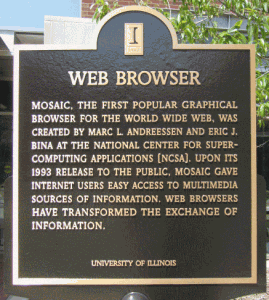Why is the Apache Web Server Called Apache?
When you look at a web site, just as you are doing now, there are several technologies at work to allow you to see the web pages. The pages are stored on remote computer called a web server. The web server is connected to your computer by the Internet. The web site is coded in HyperText Mark-up Language (HTML). A program on the web server uses HyperText Transfer Protocol (HTTP) to send the HTML to your computer. Your computer displays the HTML in your web browser.
The most popular HTTP program delivering web sites on the Internet is call Apache and is part of the The Apache Software Foundation. When this article was first published in March 2012 Netcraft ranked the Apache server as running 65% of the Internet's sites, down from 71% in November 2005. As off February 2016 Netcraft still gives Apache the lead at 33%, just. Apache has an important role in running the Internet and it is an important part of the history of the Internet.

People are often interested in why a particular name for a product or service is chosen or came about. According to the Apache Frequently Asked Questions (FAQ) page under the question Why the name "Apache"? it gives the answer as being "respect for the Native American Indian tribe of Apache (Indé), well-known for their superior skills in warfare strategy and their inexhaustible endurance". The link in the quote is from an older FAQ. The FAQ goes on to state that the name does not derive from Apache being "a patchy server", i.e. a server program based upon some other program plus some patches. However, digging a little deeper does support the second reason and makes one wonder whether the first reason is out of political correctness. Digging around the Internet produces some support for the second explanation.
In the early days of the World Wide Web (WWW) the National Center for Supercomputing Applications (NCSA) based at the University of Illinois, was one of the pioneers of web server and web browser software. Their HTTP software (NCSA HTTPd) was one of the early web servers and ran many of the early web sites. When the author of the NCSA HTTPd program, Robert McCool, joined Netscape development work stagnated at version 1.3, as discussed in this archived email. The email points to another February 1995 email from Robert S. Thau which discusses the beginnings of the Apache HTTPd, which is basically the NCSA HTTPd 1.3 release plus fixes produce from its users:
"Our goal is to produce a revised version of NCSA 1.3 which has all the popular fixes in it directly, in order to have a supported server which actually meets our needs."
It then provides an explanation on why it is called Apache:
"As to the product, we seem to have decided to call it Apache. (If you`re wondering about the name, say "Apache server" ten time fast. Europeans may want to fake their best American accent while trying this)."
The emails imply that Apache is a so called because it was the patched NCSA server. Now that may or may not be the reason, but it seems to make sense. Please let dan@tekeye.uk know of any sources you have to support either reason. (For convenience the two emails discussed here can be viewed in this text file.)

As an aside it is sometimes interesting to see how code can morph and influence the history of companies (and their fortunes).The NCSA HTTPd program was written because Marc Andreessen, who with Eric Bina wrote the NCSA web browser called Mosaic, wanted a leaner and easier to use server instead of using the CERN HTTPd program (the first ever web server). Marc and Eric went to work at Netscape which produced the Netscape Navigator browser, the most popular browser of the mid to late 1990's and made the Netscape founders (including Marc) a fortune. Meanwhile a startup from the University of Illinois called Spyglass Inc. licensed Mosaic and created their own Mosaic code base. This was in turn licensed to Microsoft to become the basis of Internet Explorer (IE). Microsoft then released IE as a add-on to Windows 95 and then subsequently bundled it with Windows. This resulted in IE displacing Navigator as the dominate browser, the first major outcome on what became known as the Browser Wars. Navigator moved to an Open Source model for development which, via the Mozilla Foundation, eventually led to the popular Firefox and the reclaiming of a large share of browser users; Firefox and IE, separated at birth but no longer ruling the roost. The new king of the castle is Google Chrome, the release of which saw IE market share continue to fall. Chrome was built by a team that includes former Firefox developers, one being Ben Goodger. Today Chrome is the sibling that has taken the crown from IE and Firefox.
Author:Daniel S. Fowler Published: Updated:







